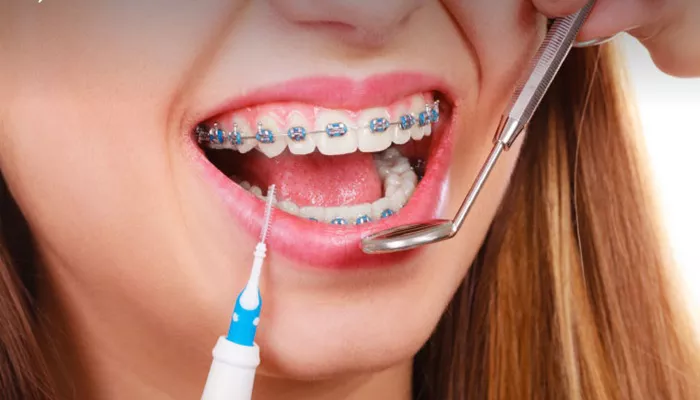As a periodontist, I often get asked whether braces can cause periodontal disease. The short answer is no, braces themselves do not directly cause periodontal disease. However, they can indirectly contribute to the development or worsening of gum disease if proper oral hygiene is not maintained. Let’s dive deeper into the relationship between braces and periodontal health.
What Is Periodontal Disease?
Periodontal disease is an inflammatory condition that affects the gums, bone, and other structures supporting the teeth. It is primarily caused by a buildup of plaque, a sticky film of bacteria that forms on the teeth. If plaque is not removed through regular brushing and flossing, it can harden into tartar, which is much harder to remove and can lead to gingivitis, the earliest stage of periodontal disease.
If left untreated, gingivitis can progress to periodontitis, a more severe form of gum disease that can cause the gums to pull away from the teeth, forming pockets that become infected. Over time, these pockets deepen, and more gum tissue and bone are destroyed. Without treatment, the bones, gums, and connective tissue that hold the teeth in place are destroyed.
How Can Braces Affect Periodontal Health?
While braces themselves do not cause periodontal disease, they can make it more difficult to maintain good oral hygiene.
The brackets, wires, and bands used in braces can create additional surfaces for plaque to accumulate, making it harder to thoroughly clean the teeth.
Furthermore, the pressure exerted by orthodontic forces can cause inflammation in the gums and bone surrounding the teeth. This inflammation is a normal part of the tooth movement process, but it can also make the gums more susceptible to infection if plaque is not removed regularly.
SEE ALSO: The 5 Major Foods That Can Make Periodontal Disease Worse
Evidence of Braces Causing Periodontal Disease
Several studies have investigated the relationship between orthodontic treatment and periodontal health. Here are some key findings:
A systematic review published in the Journal of the World Federation of Orthodontists found that orthodontic treatment can lead to an increase in plaque accumulation, gingival inflammation, and probing depth, which are all indicators of periodontal disease.
A study published in the American Journal of Orthodontics and Dentofacial Orthopedics followed patients undergoing orthodontic treatment and found that those with poor oral hygiene were more likely to develop gingival inflammation and attachment loss, which are signs of periodontitis.
Another study published in the European Journal of Orthodontics found that patients with fixed orthodontic appliances had higher levels of certain bacteria associated with periodontal disease, such as Porphyromonas gingivalis and Tannerella forsythia.
A review article published in the Journal of the International Academy of Periodontology concluded that orthodontic treatment can have a negative impact on periodontal health if proper oral hygiene is not maintained, but that the effects are usually reversible if good oral hygiene is resumed after treatment.
Preventing Periodontal Disease During Orthodontic Treatment
While braces can make it more challenging to maintain good oral hygiene, there are several steps patients can take to prevent periodontal disease during orthodontic treatment:
Brush thoroughly at least twice a day, using a soft-bristled toothbrush and fluoride toothpaste. Consider using an electric toothbrush with a pressure sensor to ensure you are brushing gently.
Floss daily using waxed floss or a floss threader to remove plaque from between the teeth and under the gumline.
Use an antimicrobial mouthwash as directed by your orthodontist or dentist to help control plaque and reduce inflammation.
Attend regular dental check-ups and cleanings during your orthodontic treatment to ensure that any plaque or tartar buildup is removed.
Avoid sugary and sticky foods that can contribute to plaque formation and tooth decay.
Wear a mouthguard during sports to protect your braces and teeth from injury.
When to See A Periodontist During Orthodontic Treatment
If you develop signs of periodontal disease during your orthodontic treatment, such as red, swollen, or bleeding gums, it’s important to see a periodontist for an evaluation. A periodontist can assess the severity of the disease and recommend appropriate treatment, which may include:
Scaling and root planing, a deep cleaning procedure that removes plaque and tartar from below the gumline.
Antibiotics, either topical or systemic, to help control bacterial infection.
Periodontal surgery, in cases of severe disease, to remove diseased tissue and promote healing.
In some cases, orthodontic treatment may need to be paused or modified to allow for proper treatment of periodontal disease before continuing with tooth movement.
Conclusion
While braces themselves do not cause periodontal disease, they can indirectly contribute to the development or worsening of gum disease if proper oral hygiene is not maintained. By brushing and flossing regularly, using antimicrobial mouthwash, and attending regular dental check-ups and cleanings, patients can help prevent periodontal disease during orthodontic treatment.
Related topics:

